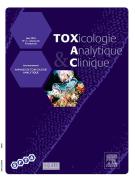The relationship between biomarker interleukin-6 and particulate matter of dust storms (Cohort study in 2024 - Zahedan City) - 08/05/25
 , Mehrnaz Hosseinzehi 6
, Mehrnaz Hosseinzehi 6Cet article a été publié dans un numéro de la revue, cliquez ici pour y accéder
Summary |
Introduction: Air pollution has a significant adverse effect on the life expectancy of people worldwide. Exposure to dust storms can adversely affect health, the environment, and economic stability. Research suggests a connection between air quality and increased death rates related to heart issues. Interleukins are important in causing inflammation. This research investigates the link between the amount of PM10 and interleukin-6 levels among healthy individuals in Zahedan.
Materials and method: In this study, sampling was performed using a PQ200/BGI sampler six days a week, including days with dust storms. The study assessed biomarker interleukin-6 levels in blood samples collected from 40 volunteers aged 20 to 35 years using the enzyme-linked immunosorbent assay) ELISA (method.
Results and discussion: The mean concentration of PM10 in the air of Zahedan during the study period was 210.4 μg/m3, indicating elevated levels of PM10, a major air pollutant, surpassing standard levels. Furthermore, the study found that interleukin 6 levels in blood samples collected during air pollution conditions were significantly higher than those in the control group (P-value<0.05).
Conclusion: When PM10 concentrations exceed the standard limit, these findings emphasize the importance of prioritizing health programs, especially considering the increase in cardiovascular and respiratory diseases, as well as elevated interleukin-6 levels during dust storms.
Le texte complet de cet article est disponible en PDF.Keywords : Air quality, Biomarker, Dust storms, PM10
Bienvenue sur EM-consulte, la référence des professionnels de santé.
L’accès au texte intégral de cet article nécessite un abonnement.
Déjà abonné à cette revue ?

